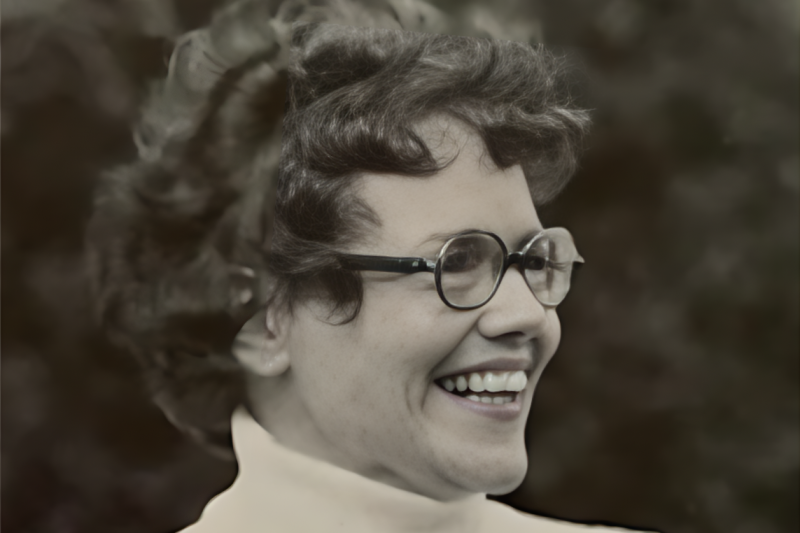
New online course: Learning to love math
_________________________________________________________
EDITOR'S UPDATE, FEB. 25, 2014: A new version of this course will be offered online June 15-Sept. 15. For more information, or to enroll, please visit How to Learn Math: For Teachers and Parents, XEDUC115N.
_________________________________________________________
The 18 freshmen in Jo Boaler’s seminar had demonstrated the academic promise needed to gain admission to Stanford, so it was striking that they shared a similar fear: Mathematics.
“I subconsciously thought either you were or you weren’t good at math,” said one student, Chloe Colberg, echoing the views of many in the class. That notion prevails in schools across the nation, and Boaler, a professor of education, has made it her mission to change that attitude. The seminar that she offered last fall emphasized that math demands creativity, collaboration and discussion more than memorization, drills and hurrying to get the right answers. According to Boaler, the way math is traditionally taught reinforces the idea that it’s an innate talent that you either have or you don’t.
“Coming into this class I realized, oh OK, that had been the mindset I had for my whole life,” Colberg said. “This class allowed me to see that’s not really how it is.”
She and her classmates said that they had finished the course last year with a new appreciation of math.
Such dramatic transformations spurred Boaler to look for a new way to reach more people with her lessons. The result is a free online course, "How to Learn Math," for K-12 teachers and parents that aims to help them improve students' engagement with math, as well as help teachers prepare to implement the new Common Core standards. The course covers topics such as "Knocking Down Myths About Math," "Mistakes, Challenges and Persistence" and "Appreciating Algebra."
It will be offered, beginning July 15, through the university’s new open-source platform, OpenEdX. Already more than 20,000 people have enrolled. A course listing on the Stanford Online website provides further detail about the lessons and how to register. She will also offer a version of the course, designed especially for students from ages around 10 to adult, in the 2013-14 school year.
Boaler has devoted her career to studying math teaching and why math evokes such strong negative feelings among so many. One survey of adults found that four out of 10 hated math in school, twice as many as any other subject. Her research shows that an approach to teaching math that includes problem solving, discussion and the use of real-life examples can make students more enthusiastic about the subject and improve their performance.
Boaler said that the other important strand in her work is the mindsets students come to math with — and the ever present myth that only some students can be good at math. She has presented her findings in leading peer-reviewed journals, as well as in a book for a general audience, What's Math Got to Do With It? How Parents and Teachers Can Help Children to Love Their Least Favorite Subject.
“Math teaching is often too procedural,” Boaler said. “There’s a lot of drill and practice.
“I want students to understand the importance of conceptual thinking in math,” she added. “In this class, for instance, when we work on number problems, we’ll look at how they can be solved in many ways, not just one. And we’ll explore how to represent and understand them visually.”
In Boaler’s approach, a teacher could ask a class of students how they can solve the problem 18 times 5 — without a pen and paper — and then collect the different methods and compare them. There are several different ways of solving the problem, including multiplying 20 by 5 and subtracting 2 X 5; multiplying 18 x 10 and halving the answer; or adding 8 X 5 and 10 X 5 — all ways to reach 90.
Participants in the online course will see the difference in approaching problems procedurally and conceptually, Boaler said.
The course will feature interviews with successful users of math in different, interesting jobs — a filmmaker and the inventor of self-driving cars — to demonstrate the importance of conceptual math and the types of mathematical relationships that may benefit students. It will also include an interview with Carol Dweck, professor of psychology at Stanford, whose research showing the impact of having a “growth mindset” — a belief that math is learned, not an innate talent — underlies Boaler’s approach to teaching math.
Boaler said that her approach encourages students to think of themselves as capable in math and to see math as an interesting, visual subject that is all around them. Her research has shown that when students approach math in these ways they enjoy their learning and achieve at higher levels.
The course consists of eight sessions of one to two hours. About 15-20 minutes of each session features video of Boaler introducing ideas; the rest of the time involves exercises and other activities that engage participants. In addition, the class promotes interactivity through an online forum where students can discuss the lessons with each other. Participants can also engage in a live video session with Boaler where she will answer questions that course participants submit.
“Teachers at many schools are taking it together and planning to discuss and do all the activities in groups,” Boaler said. “Encouraging people to take it together is a great thing.”
The new course will be one of the first to debut on OpenEdX, which replaces Stanford's previous platform, Class2Go.
In April, Stanford and edX, the nonprofit online learning enterprise founded by Harvard and MIT, announced they would collaborate on future development of the edX online platform. As part of that effort, edX has released the platform as open-source for developers around the world to use. Stanford will now use the OpenEdX platform as one of several platforms for both online course content for on-campus Stanford students and online classes available to the public.
Boaler’s course is particularly timely given that 45 states, including California, are adopting the Common Core, which sets higher standards for K-12 students’ mastery of math and reading. The math standards call for better conceptual understanding and fluency in problem solving.
“Many districts are really worried about how unprepared their math teachers are for the Common Core,” said Boaler. “The key is for teachers to learn to teach the concepts at the heart of mathematics and to help learners understand they are all capable of high-level math.”



